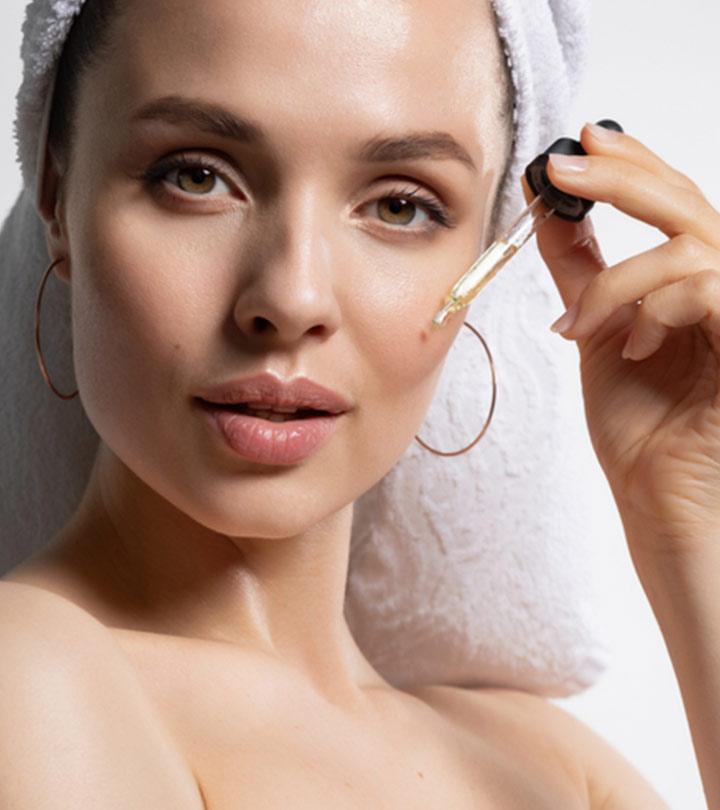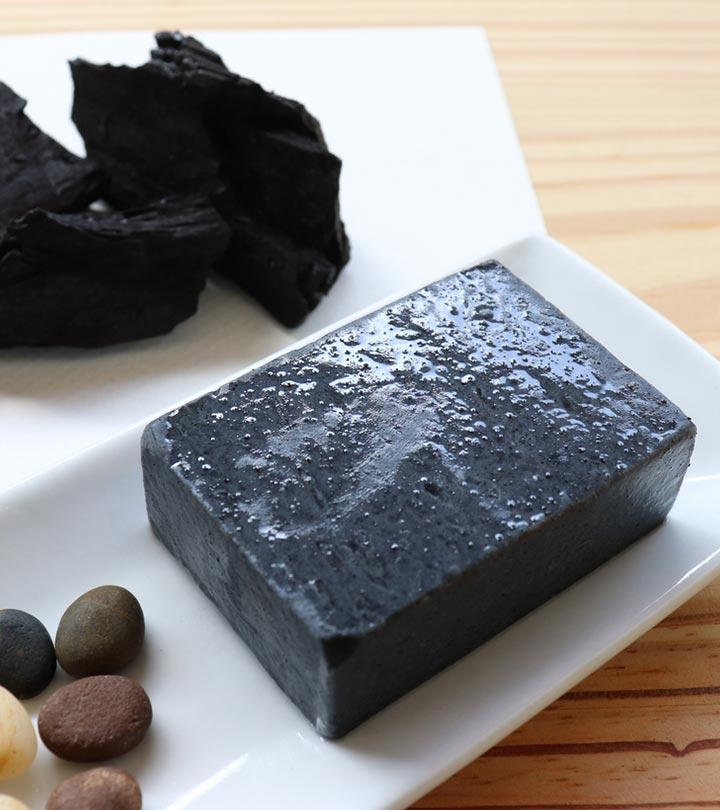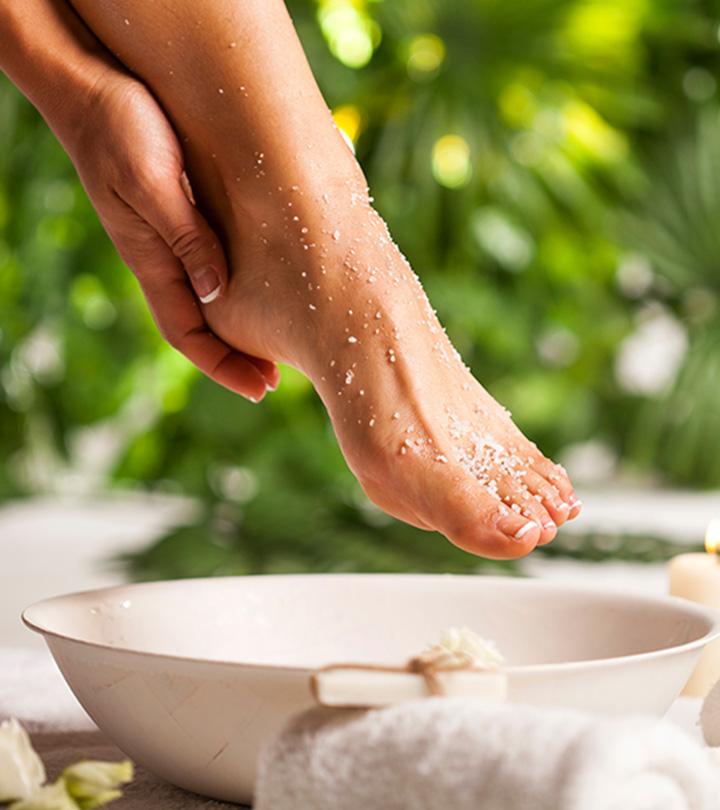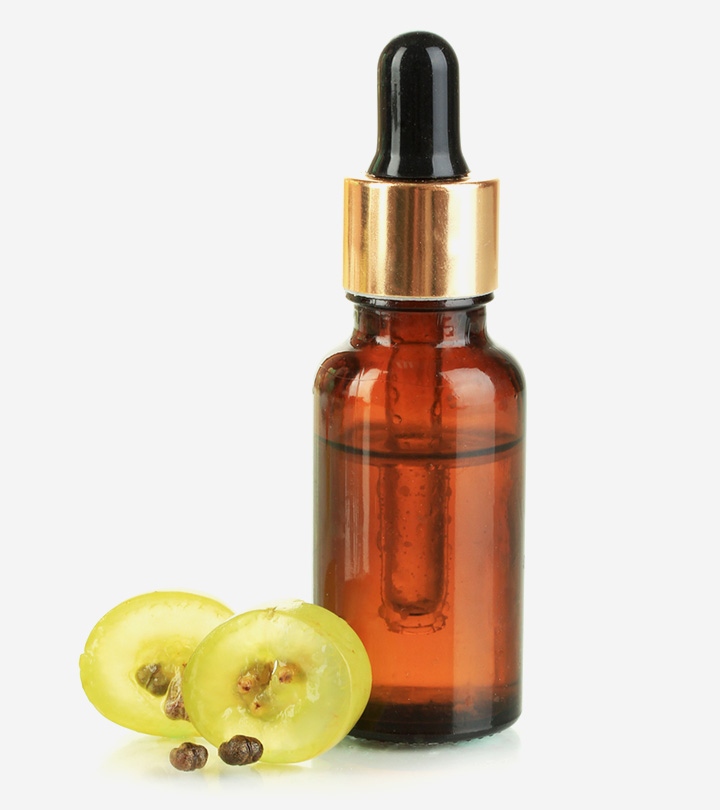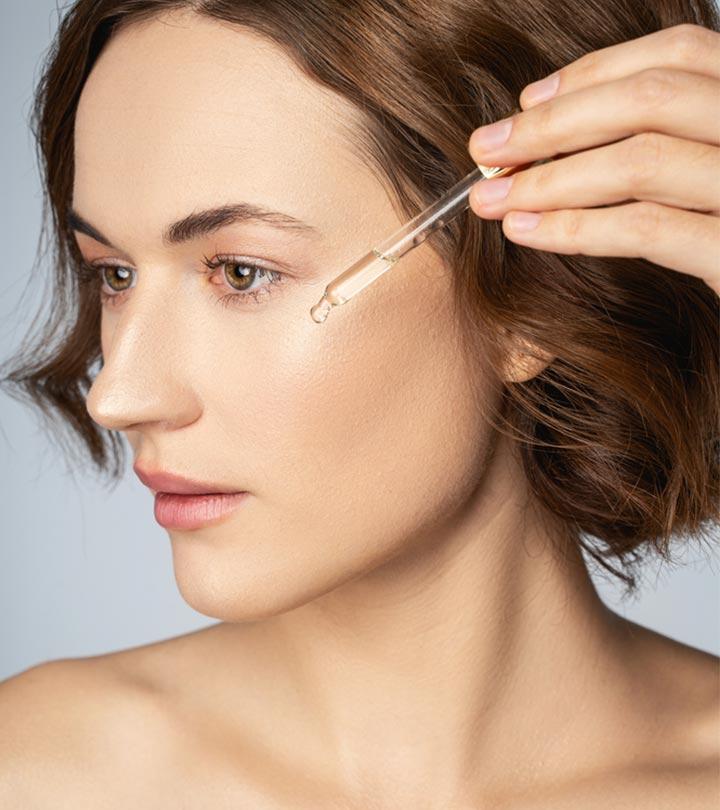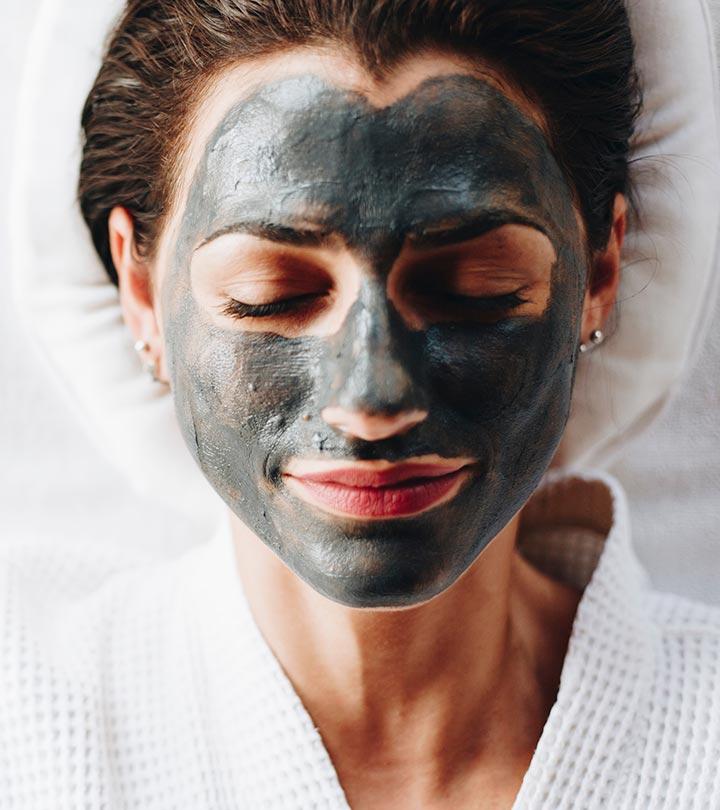Meadowfoam Seed Oil For Skin: Benefits And How To Use It
You will be surprised to learn how this oil can reduce stretch marks and soften your skin.
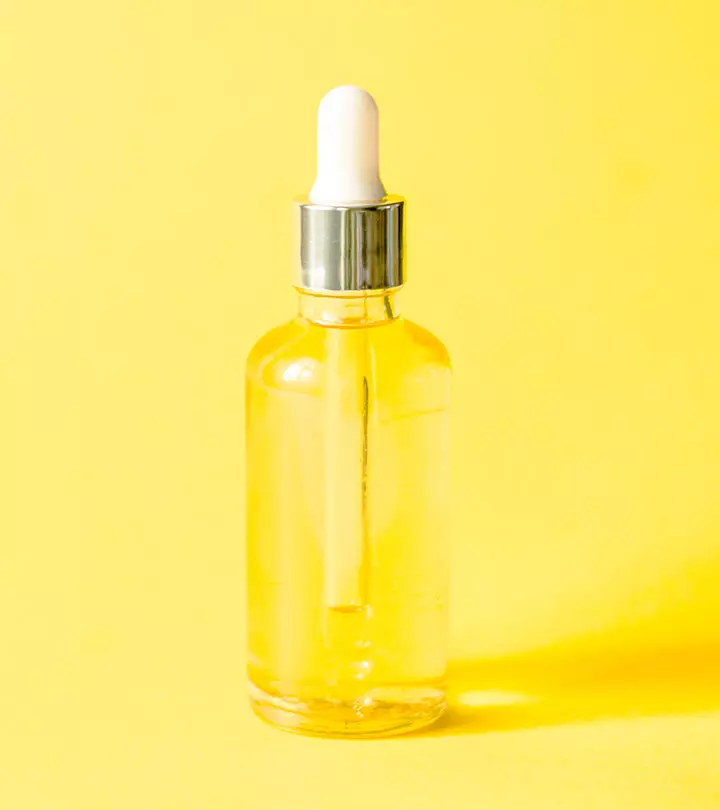
Image: Shutterstock
We are all aware that nourishing and nurturing the skin with natural oils leaves it looking fresh, smooth, radiant, and healthy. That is why many people have started using meadowfoam seed oil for skin care. Meadowfoam seed oil is becoming more popular due to its skin and hair care benefits. Are you curious as to why? Let’s learn more about this unique oil and how it works on your skin. Keep reading to know more!
 Did You Know?
Did You Know?In This Article
What Is Meadowfoam Seed Oil?
Meadowfoam seed oil is a plant-based oil that is sourced from meadowfoam or Limnanthes albus seeds. This oil consists of many fatty acids and antioxidants, due to which it finds its way into various skin care and hair care products (1). It also works well with the other ingredients used in these products. Meadowfoam oil is also claimed to thicken skin care products, enhance skin texture, and increase their moisturizing effect.
Compared to the facial and essential oils like jojoba and coconut oils commonly used in skin care products, meadowfoam oil is relatively unknown. This oil has a unique chemical structure that makes it a great oil to moisturize your skin and hair without leaving behind a greasy residue. Though it is an oil, it is not thick and greasy. In fact, it is becoming increasingly popular for its supposed emollient properties without being greasy. This makes meadowfoam oil very similar to argan oil but way cheaper and more stable.
Meadowfoam plant, the source of the oil, is a flowering plant that is native to Oregon, California, and Western Canada. Its oil is made up of 95-98% long-chain omega-9 fatty acids, which give it stability and make it an oxidative oil (1). This is claimed to make meadowfoam seed oil resistant to heat, oxidation, light, and ambient air. As a result, it is less likely to get spoilt or develop a foul odor when exposed to sunlight or ambient air, giving it a long shelf-life of around three years.
It is interesting to note that meadowfoam oil is chemically similar to jojoba oil containing unsaturated fatty acidsi A type of fatty acid that helps keep the skin hydrated and plays an important role in keeping your skin healthy and youthful. like facis-5-eicosenoic acid (61%) and cis-5-and cis-13-docosenoic acid (16%) (1). However, it has been found to have a unique blend of fatty acids that are not naturally found in any plant. Apart from fatty acids, meadowfoam seed oil also contains the following components:
- Vitamin E
This vitamin is known for its healthy skin benefits. It is said to protect the upper layer of the skin, improve skin texture, and prevent sun damage and other skin damage by acting as a free radical scavenger (2).
- Vitamin C
Vitamin C is known for its many skin benefits. It acts as a protective barrier against environmental agents that can damage the skin. It is also known to protect the skin from UV damage and stimulate collagen synthesis that aids anti-aging effects to reduce the appearance of lines, wrinkles, brown spots, and pores and improve skin texture ( 3).
- Linoleic Acid
Linoleic acid is used in skin care products because it is said to promote cellular regeneration and turnover rate. It also plays a direct role in protecting the integrity of the skin (4).
 Trivia
TriviaNow that you know all the nutrients present in meadowfoam oil, let’s check out the benefits it offers for your skin.
Benefits Of Meadowfoam Oil For Skin
1. Keeps Your Skin Hydrated
An emollient is a substance that creates a protective seal and locks in moisture when applied to the skin. Due to its high fatty acid content, meadowfoam seed oil acts as an emollient when applied to the skin ( 5).
When meadowfoam oil is applied to the skin, it retains moisture and keeps it hydrated, soft, and supple. The long shelf-life and stability of this oil also make it an effective emollient. Moreover, meadowfoam oil is light and does not feel greasy when applied to the skin. Being a gentle vegetable-based oil, it is suitable for most skin types and conditions.
2. Softens The Skin
Since meadowfoam oil hydrates your skin, it keeps its texture soft. When applied to the skin, it prevents the loss of moisture that makes your skin dry and rough. However, more research is required to prove this claim.
3. Helps Reduce Stretch Marks
A product containing meadowfoam oil, along with other emollients such as shea butter, cocoa butter, and olive oil, has shown positive results in treating stretch marks (6). In addition, it contains vitamin E, which may reduce stretch marks. However, this depends on the concentration of vitamin E in the oil. More research is required to prove the efficacy of meadowfoam oil in this regard.
4. Prevents Sun Damage
Skin exposure to the sun’s UV rays is damaging. It is said to produce free radicals that can cause various conditions like skin cancers, spots, accelerated aging, etc. A study conducted in 2018 on two chemicals – 3-methoxybenzyl isothiocyanate and 3-methoxyphenyl acetonitrile (both found in meadowfoam seed oil) demonstrated that they could protect the skin from the sun’s UV B rays (7). These photoprotective properties of meadowfoam oil can be used in sunscreens and sunblocks, among other skin care products.
5. Balances Sebum Production
Meadowfoam oil is known for its non-greasy feel and getting absorbed into the skin easily. It is also claimed to help balance the skin’s natural sebumi An oily substance released by the sebaceous glands, which helps keep your skin hydrated and forms a protective layer on the skin. production, though there is not enough scientific evidence to prove the same. A balanced secretion of sebum ensures that your skin does not break out, has the right amount of moisture, and is not too dry or too oily.
6. Protects The Skin From Damage
Meadowfoam oil contains powerful antioxidants like vitamins C and E that protect the skin from oxidative stressi An imbalance between antioxidants and free radicals in the body that leads to skin aging and increases the risk of skin cancer. and free radical damage. However, more research is required to establish how effective it is in this regard.
7. May Minimize Eczema Symptoms
The monounsaturated fatty acids and vitamins C and E in the oil may help improve skin moisture and possibly help alleviate skin conditions like eczema (1). The oil’s lubricating properties also help seal skin moisture. However, some individuals report minor allergic reactions to the oil. Hence, do a patch test before using the oil. Consult a doctor immediately should you experience any adverse effects.
Besides these skin benefits, meadowfoam seed oil is claimed to offer lots of benefits for your hair too. The emollient property of meadowfoam seed oil may help to lock the moisture in your hair and keep it hydrated. This prevents brittleness, tangling, frizz, and dullness. The nourishing and moisturizing properties of meadowfoam oil may also help manage and groom one’s beard hair. The oil may help seal moisture, improve beard texture, and reduce its frizz and brittleness.
This property of meadowfoam oil is used in conditioners. A form of this oil called dimeadowfoamidoethylmonium sulfate is used in conditioners as it is said to create a protective seal on your hair to prevent moisture loss. In fact, people with dyed hair are advised to use conditioners containing this chemical as it is resistant to oxidation and prevents stripping of color. However, more research is required to test these benefits of meadowfoam oil for hair.
Now, let’s explore how you can use this beneficial oil on your skin!
How To Use Meadowfoam Oil For Skin
Meadowfoam oil is available individually, in combination with other oils, and in many skin care products. Since it works well with other skincare products, you can add a few drops of it to your daily moisturizer and apply it to your skin.
Some other ways to use it on your skin include:
- Add a few drops of meadowfoam oil to your moisturizer or serum as part of your nighttime skin care routine. This helps prevent dry skin and allows your skin to recover overnight. This is especially helpful for people with dry or dehydrated skin.
- You can use this oil on your face as the final step in your skin care routine during the day. Add a few drops of meadowfoam seed oil to your daily moisturizer or hydrating serum and apply it to your face after cleansing.
- Use a skin care product that contains meadowfoam oil along with other natural and essential oils and use it as per the given instructions.
- If you are using a conditioner containing meadowfoam oil, you can follow the instructions given on the product bottle.
Wondering how often you can use this oil? Find out in the next section!
How Often Can You Use It?
Due to its high safety and minimal risk of adverse effects, you can use meadowfoam seed oil every day as a part of your daytime or nighttime skin care routine. You can use it directly on your skin, in combination with other oils, as well as in skin care and cosmetic products.
Now, let’s answer the most important question.
Are There Any Side Effects Of Using Meadowfoam Seed Oil?
Meadowfoam seed oil is mainly considered safe and does not irritate the skin. Based on the scientific evidence, the Cosmetic Ingredient Review has designated meadowfoam seed oil as a ’safe’ ingredient for use in cosmetic products (8).
However, it is always recommended to perform a patch test on your forearm before using it on your face. If you are allergic to meadowfoam oil, you may experience symptoms like rash, itchiness, swelling, and inflamed skin. If you experience one or more of these symptoms, you must stop using the oil immediately and consult a doctor. Other symptoms that you may experience after using meadowfoam oil or products containing it are:
- Hives
- Tingling
- Redness on the skin
- Scaly skin
- Blisters that ooze serous fluid or pus
It is always recommended to wait for at least 24 hours after your patch test before you apply meadowfoam oil to your face.
Meadowfoam seed oil helps keep your skin and hair fresh, smooth, healthy, and strong. The oil has several benefits for your skin and is one of the popular ingredients in many emollient creams, conditioners, and lotions. It is suitable for all skin types, helps reduce stretch marks, prevents sun damage, and balances sebum production. The oil is stable in various environmental conditions and has a long shelf-life. It also works well if combined with other skin care products. So, you may use it with your DIY recipes or add the oil to your daily moisturizer.
Frequently Asked Questions
Does meadowfoam seed oil clog pores?
No. Meadowfoam seed oil has a very low comedogenic rating and is not likely to clog pores. Being a plant seed oil, it closely resembles natural skin oils and is easily absorbed into the skin without causing buildup.
What does meadowfoam oil smell like?
Meadowfoam oil is odorless and has no distinct scent.
Is meadowfoam safe during pregnancy?
Meadowfoam oil is deemed safe for use as a carrier oil during pregnancy. However, as there is a lack of evidence regarding this, it’s best to consult with your ob-gyn before introducing it to your skincare regime.
Key Takeaways
- The unique chemical structure of meadowfoam seed oil helps moisturize the skin and hair.
- It is rich in vitamin C, E, and linoleic acid and is known for its wide range of skin benefits.
- As a moisturizer, it helps seal skin moisture and works well on acne-prone skin.
- This oil has a shelf life of about three years and is a good emollient.
- However, do a patch test before using it on your skin to avoid adverse effects.
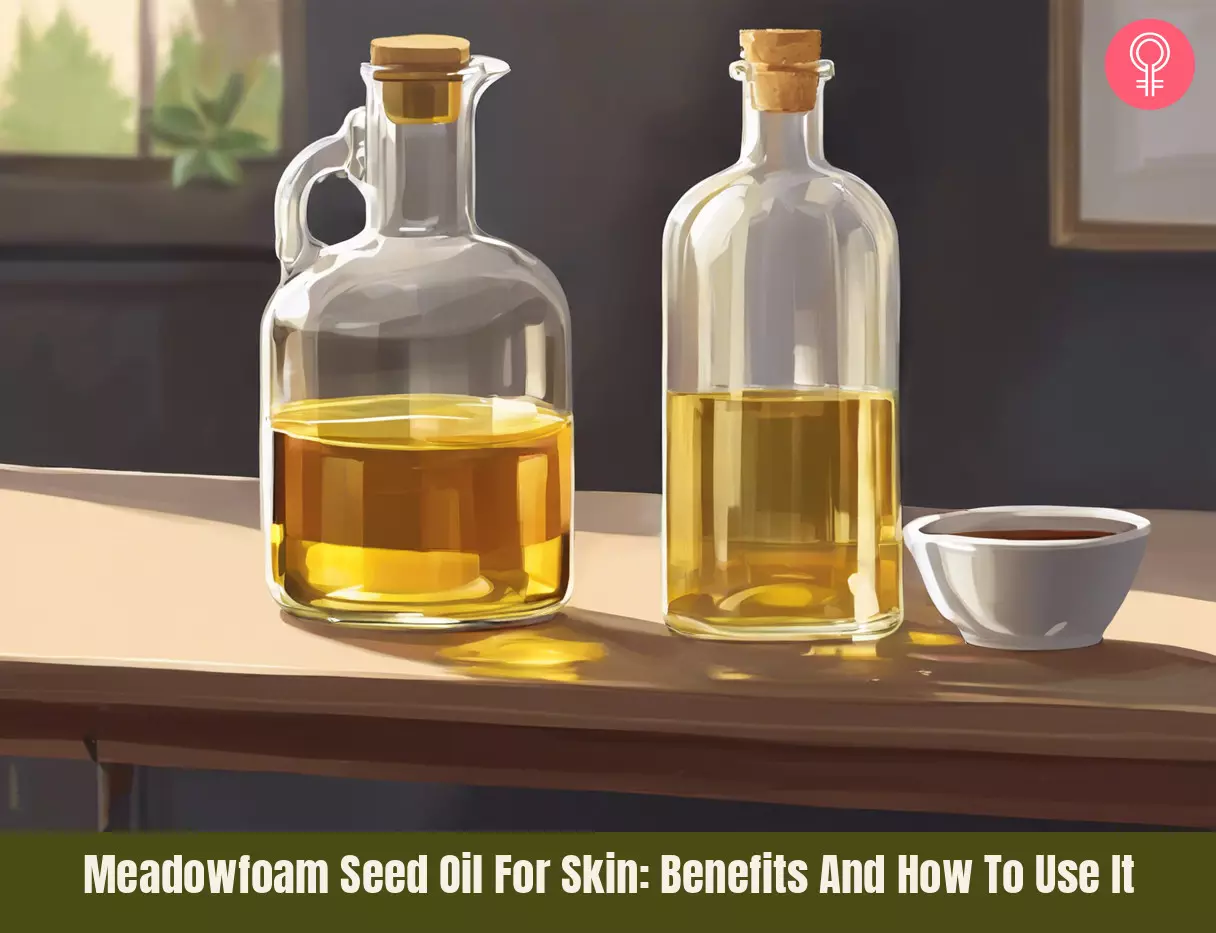
Image: Stable Diffusion/StyleCraze Design Team
Discover the amazing health benefits of meadowfoam oil! Learn what it is and how it can help improve skin, hair, and overall health and wellbeing. Check this video for more!
References
Articles on StyleCraze are backed by verified information from peer-reviewed and academic research papers, reputed organizations, research institutions, and medical associations to ensure accuracy and relevance. Read our editorial policy to learn more.
- Two- and Three-Dimensional Spectrofluorimetric Qualitative Analysis of Selected Vegetable Oils for Biomedical Applications
https://www.ncbi.nlm.nih.gov/labs/pmc/articles/PMC7730717/ - Vitamin E in dermatology
https://www.ncbi.nlm.nih.gov/pmc/articles/PMC4976416/ - The Roles of Vitamin C in Skin Health
https://www.ncbi.nlm.nih.gov/pmc/articles/PMC5579659/ - Anti-Inflammatory and Skin Barrier Repair Effects of Topical Application of Some Plant Oils
https://www.ncbi.nlm.nih.gov/pmc/articles/PMC5796020/ - Novel phytoceramides containing fatty acids of diverse chain lengths are better than a single C18-ceramide N-stearoyl phytosphingosine to improve the physiological properties of human stratum corneum
https://www.ncbi.nlm.nih.gov/pmc/articles/PMC5602416/ - Topical management of striae distensae (stretch marks): prevention and therapy of striae rubrae and albae
https://www.ncbi.nlm.nih.gov/pmc/articles/PMC5057295/ - Photoprotective Properties of Isothiocyanate and Nitrile Glucosinolate Derivatives From Meadowfoam (Limnanthes alba) Against UVB Irradiation in Human Skin Equivalent
https://pubmed.ncbi.nlm.nih.gov/29867483/ - Hydrogenated Meadowfoam Seed Oil
https://www.cosmeticsinfo.org/ingredient/hydrogenated-meadowfoam-seed-oil/
Read full bio of Dr. Seepika Jaiswal
Read full bio of Ramona Sinha
Read full bio of Monomita Chakraborty


















